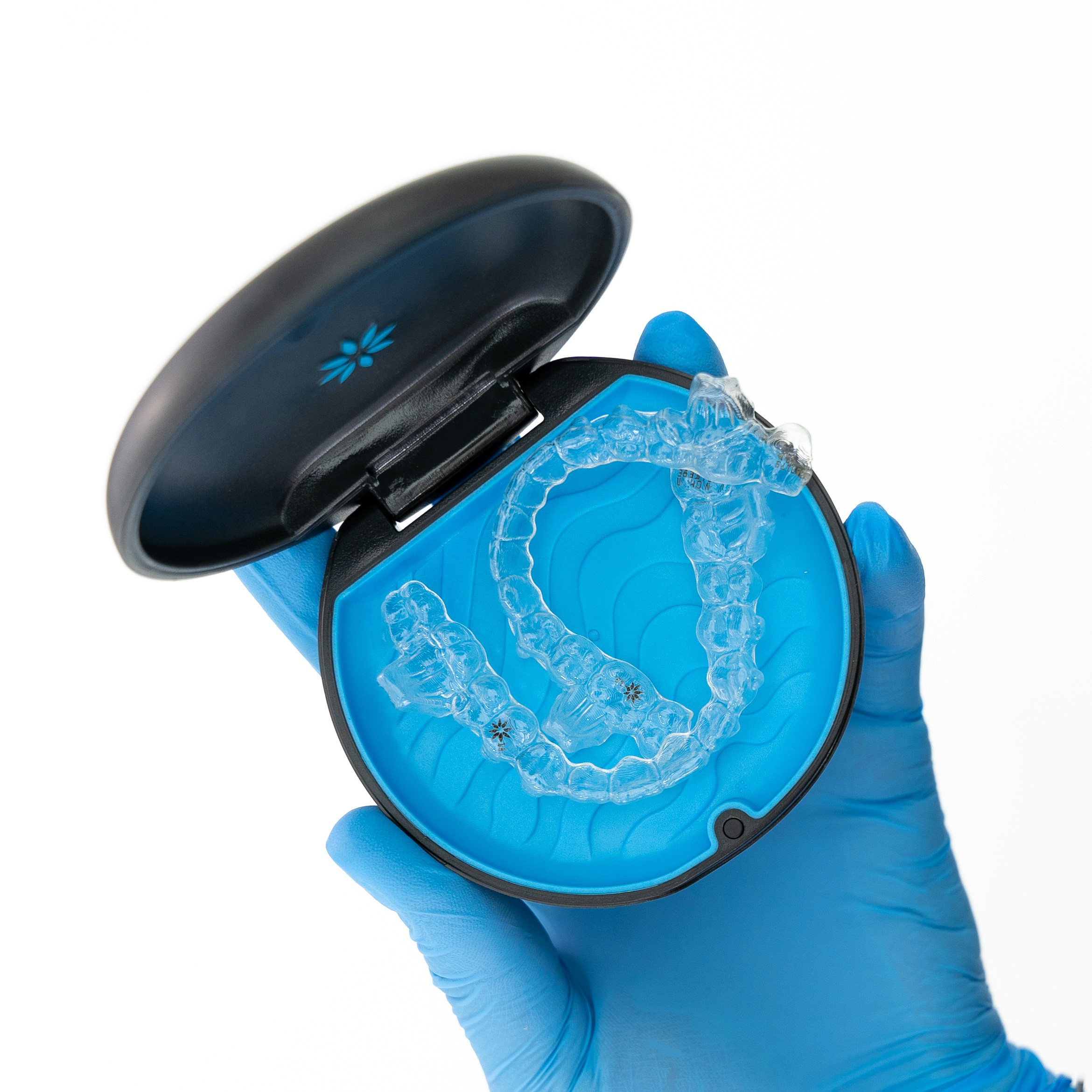What is Invisalign?
Invisalign aligners are custom-made, transparent plastic trays that fit snugly over the teeth. They apply gentle pressure to shift teeth into the desired position over time. Unlike traditional braces, these aligners are removable and virtually invisible when worn.

Invisalign clear aligners
The Invisalign Process
- Consultation: The journey begins with a consultation where the dentist evaluates your dental structure and discusses whether Invisalign is the right choice for you.
- Custom Treatment Plan: Using 3D imaging technology, the dentist creates a precise treatment plan that maps out the movement of your teeth. This plan allows you to see the expected changes and final outcome before starting the treatment.
- Receiving Your Aligners: Based on the treatment plan, custom aligners are created. You’ll wear each set of aligners for about two weeks before switching to the next set in the series, gradually moving your teeth toward the desired alignment.
- Regular Check-ups: Periodic dental visits are scheduled to monitor progress and ensure the treatment is proceeding as planned.
- Completion and Retention: After completing all the aligner sets, you may need to wear retainers to keep your teeth in their new position and prevent them from shifting back.
Cost of Invisalign
Invisalign can be more expensive than traditional braces, with costs varying based on the complexity of the case, the duration of treatment, and geographic location. The higher cost reflects the advanced technology and custom manufacturing of the aligners. Many dental insurance plans now cover Invisalign to the same extent they cover braces, so it’s worth checking with your insurance provider.
Invisalign vs. Traditional Braces
Reasons someone might choose Invisalign over traditional braces include:
- Aesthetics: Invisalign’s clear aligners are less noticeable than metal braces, making them a popular choice for adults and teens who are self-conscious about their appearance.
- Comfort: The smooth plastic aligners are generally more comfortable and less likely to irritate the cheeks and gums than the wires and brackets of braces.
- Convenience: Invisalign aligners are removable, making it easier to eat, brush, and floss, which can lead to better oral hygiene during treatment.
- Predictability: Using 3D imaging technology, Invisalign allows patients and dentists to visualize the entire treatment plan from start to finish, even before the treatment begins.
- Fewer Office Visits: Invisalign often requires fewer check-ups and adjustments than traditional braces, as several sets of aligners are provided at once, reducing the number of visits to the orthodontist.